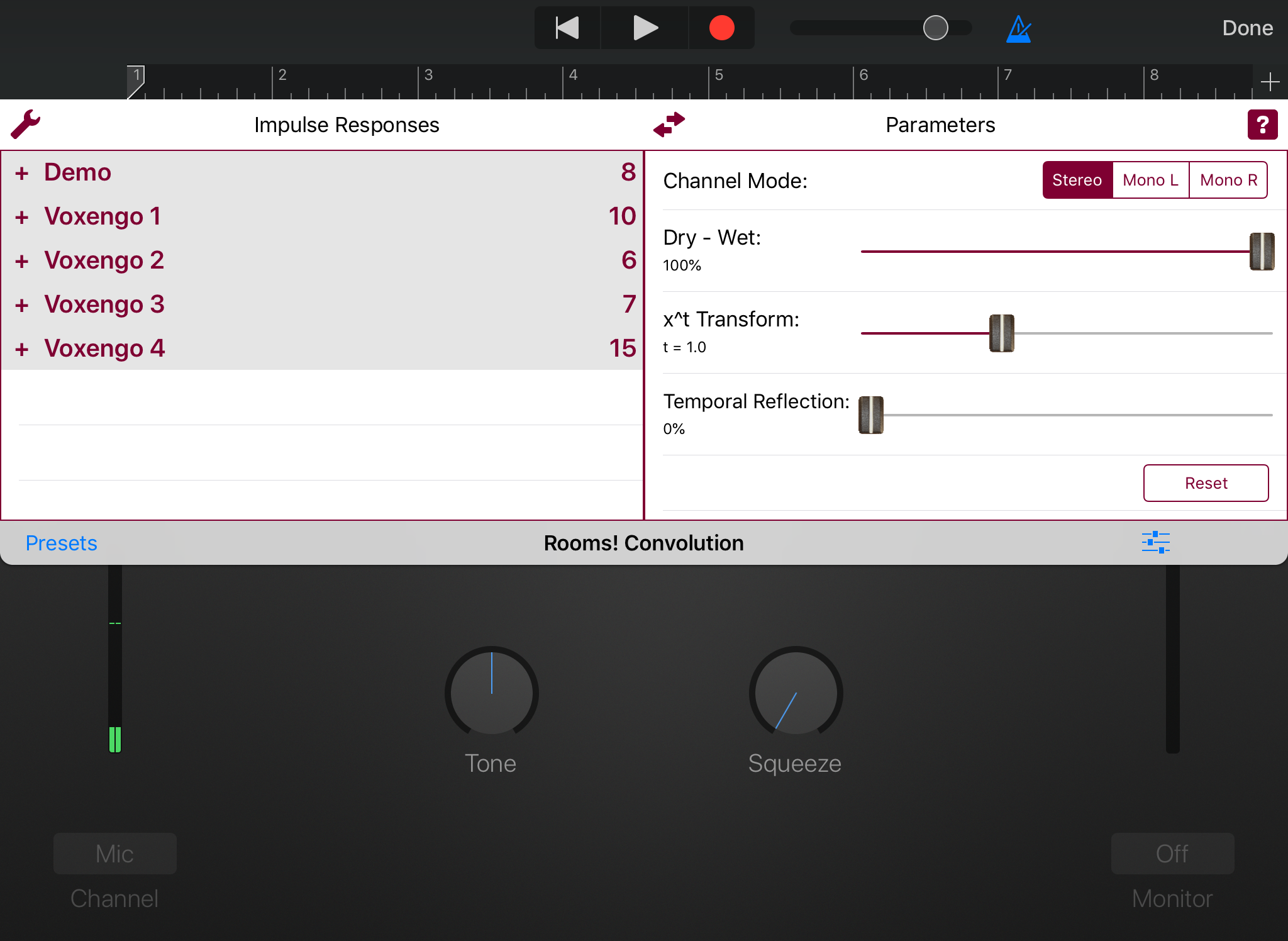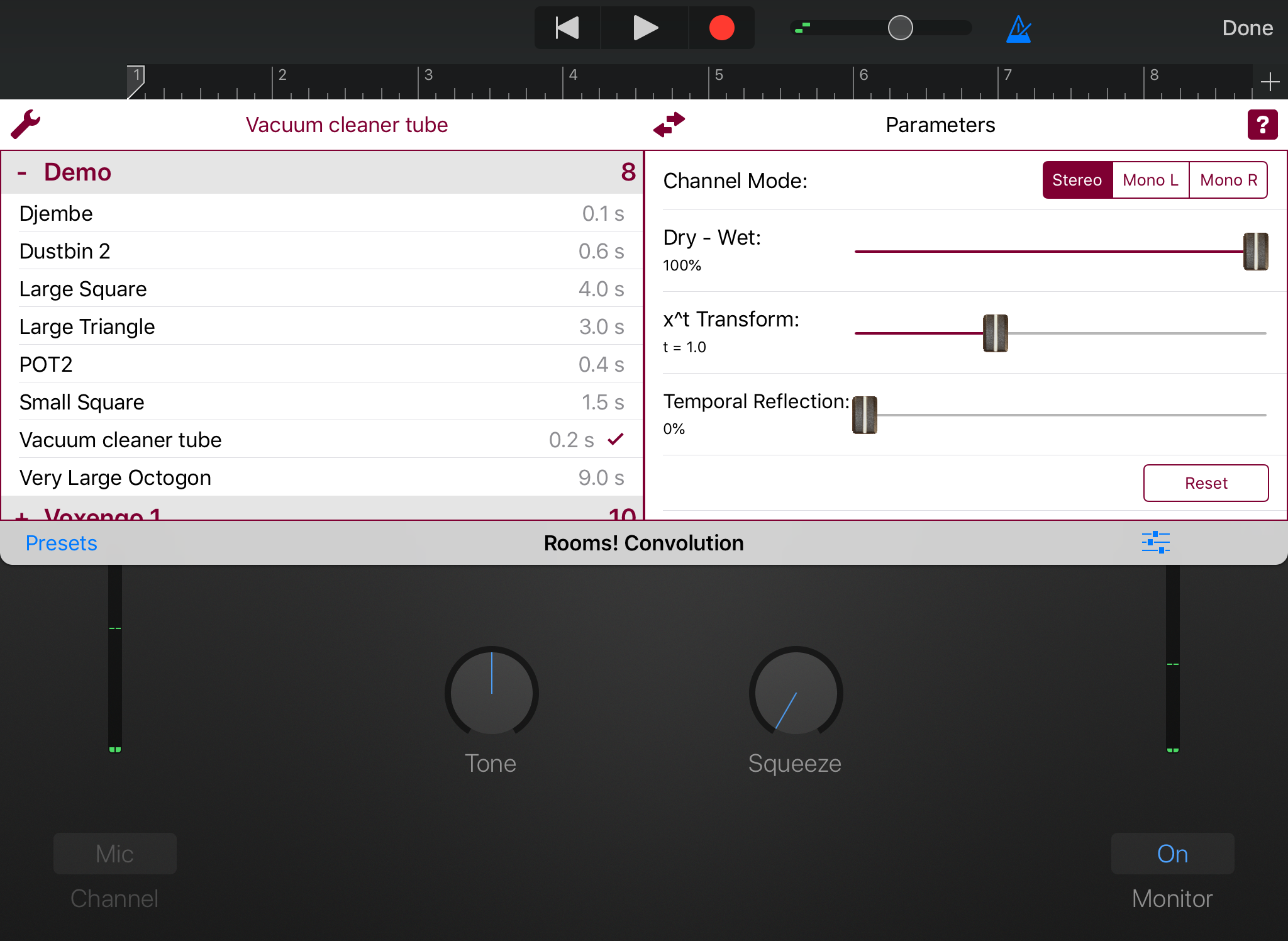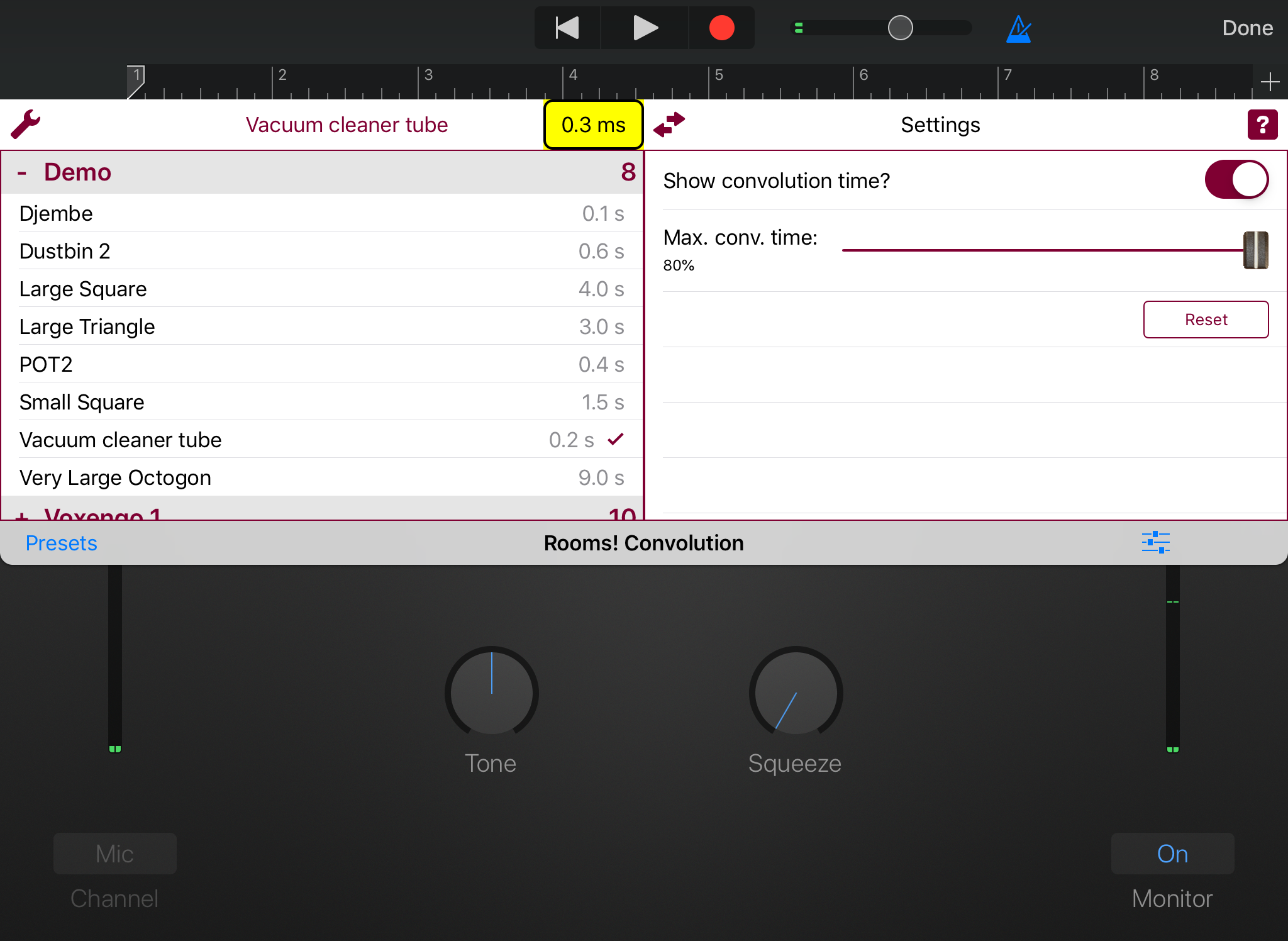| Return to the Rooms! Support Page |
Using the Convolution Reverb of Rooms! as an Audio Unit
Starting with version 6.4, Rooms! contains an AUv3 app extension that allows an AUv3 host to employ the convolution reverb engine of Rooms! as an audio unit. Before you can use this audio unit, you have to perform the Audio Unit in-app purchase in Rooms! (go to the Settings view in Rooms! and select In-App Purchases in the action menu at the top right).
When you first start Room! 6.4, its impulse response library is migrated to a shared folder where it can be accessed by the app extension. You continue to use Rooms! for managing the impulse responses, as is detailed here. The app extension's view is built of two parts, one for selecting impulse responses, the other for editing parameters and settings. Whether these are layed out horizontally or vertically, depends on the geometry of the screen area that is supplied by the host app. In GarageBand, which supports only landscape orientation, the iPad view looks like this:
The impulse responses table view at the left has an expandable section for each of the impulse response sets. At the left side of each section header it shows a plus or minus sign, depending on the expansion status of the section, while at the right side of the header it displays the number of impulse responses of the set. You can expand or collapse a section by tapping anywhere in the section header.
When an impulse response is activated by tapping, this is indicated by a checkmark at the right side. Furthermore, the set and name of the selected impulse response are shown in the table header:
When you tap this header, the table view scrolls to the selected impulse response. Tapping the selected impulse reponse or selecting another one will deselect the selected impulse response.
When you install or delete impulse responses in Rooms!, you might have to refresh the table view of the app extension. This can be done by pulling down the table view. Note that the view also shows impulse response files in nested subdirectories. For these, the name is preceded by the directory level names.
At the top left you see a wrench icon. Tapping it allows you to select whether the impulse response files should be sorted by name (this is the default) or by length (i.e. duration of the sound) and whether the list should have a compact format (this is the default) or not.
With the arrows icon at the top left of the Parameters view you can switch to the Settings page (and back). Here you can activate the convolution time display, which shows the total time needed for the audio unit's render callback in the top right of the impulse responses view, and you can change the maximum time in percent that is allowed for the callback. If the convolution operation needs more time, it will be cancelled, and a yellow warning triangle will appear. Parameters and settings are persistent, i.e. when you later start another instance of the audio unit, this will be initialised with the last used values.
With the question mark icon at the top right you can call up two help
pages. One that corresponds to the page that you are reading right now,
and another one that corresponds to the page
about the installation of impulse response
files. As the help pages are loaded from the polaron.de
web server, this works only if you have internet access.
The Presets button is a general AUv3 functionality. In our case it creates a preset from the selected impulse response and the current parameter values. There is no protection against deleting (in Rooms!) an impulse response that is used in a preset. You will get an error message if you try to install a preset whose impulse response has gone.
The parameters view at the right does not need to be explained here, as it is the same view that you know from the Tweak button within Rooms!. We only mention the fact that the Dry – Wet slider has an immediate effect, while the other parameters have an impact only after the slider movement has completed.
At the bottom right you see an icon with horizontal sliders. This is GarageBand's way to give you access to the parameters. It is of no advantage compared to the built-in parameters view of the Rooms! AUv3 view controller, but other hosts may implement other and maybe better interfaces.


